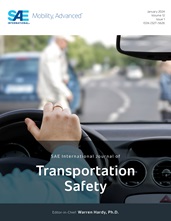Real-Time Driver Drowsiness Detection Using YOLOv8 with Whale Optimization Algorithm
- Features
- Content
- Driver fatigue and drowsiness portray an integral role in the frequency of road accidents. Putting in place policies intended to alert drivers is imperative for averting accidents and saving lives. This work aims to improve road safety by devising a real-time driver drowsiness detection system. To accomplish this, drowsiness is detected using YOLOv8 algorithm optimized with the whale optimization algorithm (WOA). Key facial cues such as eye closure and yawning frequency are monitored to analyze driving behavior by the suggested approach. YOLOv8 model optimized with WOA processes video streams in real time and sets off an alarm on the graphical user interface (GUI) dashboard based on the output. The proposed approach was investigated using two datasets namely UTA-RLDD and D3S. A 640 × 640 pixel image with a frame rate of 50 fps was used in the investigation. The mAP at 0.5 (mean average precision at 0.5 IoU (intersection over union) threshold) of drowsiness detection system using UTA-RLDD dataset is 85.4% and using D3S dataset is 84.3%. It was indicated by the obtained results that the WOA-optimized YOLOv8 model attains superior detection accuracy and quicker inference times in comparison to the contemporary methods. This analysis sets the stage for advancements in real-time drowsiness detection techniques for implementation in vehicle safety systems.
- Pages
- 19
- Citation
- Nandal, P., Pahal, S., Sharma, T., and Omesh, O., "Real-Time Driver Drowsiness Detection Using YOLOv8 with Whale Optimization Algorithm," SAE Int. J. Trans. Safety 13(1), 2025, https://doi.org/10.4271/09-13-01-0001.
